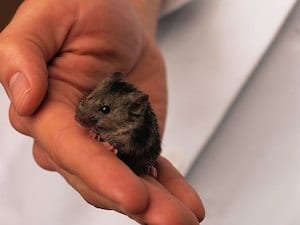
THURSDAY, May 3, 2018 (HealthDay News) — Sometimes life’s sudden shocks or illnesses can turn hair gray — Barbara Bush, the former first lady who passed away in April, reportedly had her brown hair turn gray as a young mother, following a daughter’s tragic death.
But how does premature graying happen? Scientists say new animal research may help clear up the mystery.
The mouse studies suggest there’s a link between genes that contribute to hair and skin color and genes that alert the body about infections.
“This new discovery suggests that genes that control pigment in hair and skin also work to control the innate immune system,” said study co-author William Pavan.
“These results may enhance our understanding of hair graying,” he said. Pavan is chief of genetic disease research at the U.S. National Human Genome Research Institute.
The study authors explained that when a body is under attack from a virus or bacteria, the innate immune system kicks into gear. However, the investigators said they were surprised by the link they found between immune system activation and hair pigmentation in the mice.
The report was published online May 3 in the journal PLoS Biology. The study couldn’t prove a cause-and-effect relationship, and animal research often can’t be replicated in human studies.
Still, “discovering this connection will help us understand pigmentation diseases with innate immune system involvement, like vitiligo,” Pavan said in a journal news release.
Vitiligo is a condition that causes discolored skin patches. It affects less than 1 percent of people.
Why rodents that are predisposed to go gray are more susceptible to changes in immune system signaling isn’t clear. The researchers said they will continue their studies to address this question.
More information
The U.S. National Institute of Arthritis and Musculoskeletal and Skin Diseases has more on vitiligo.
